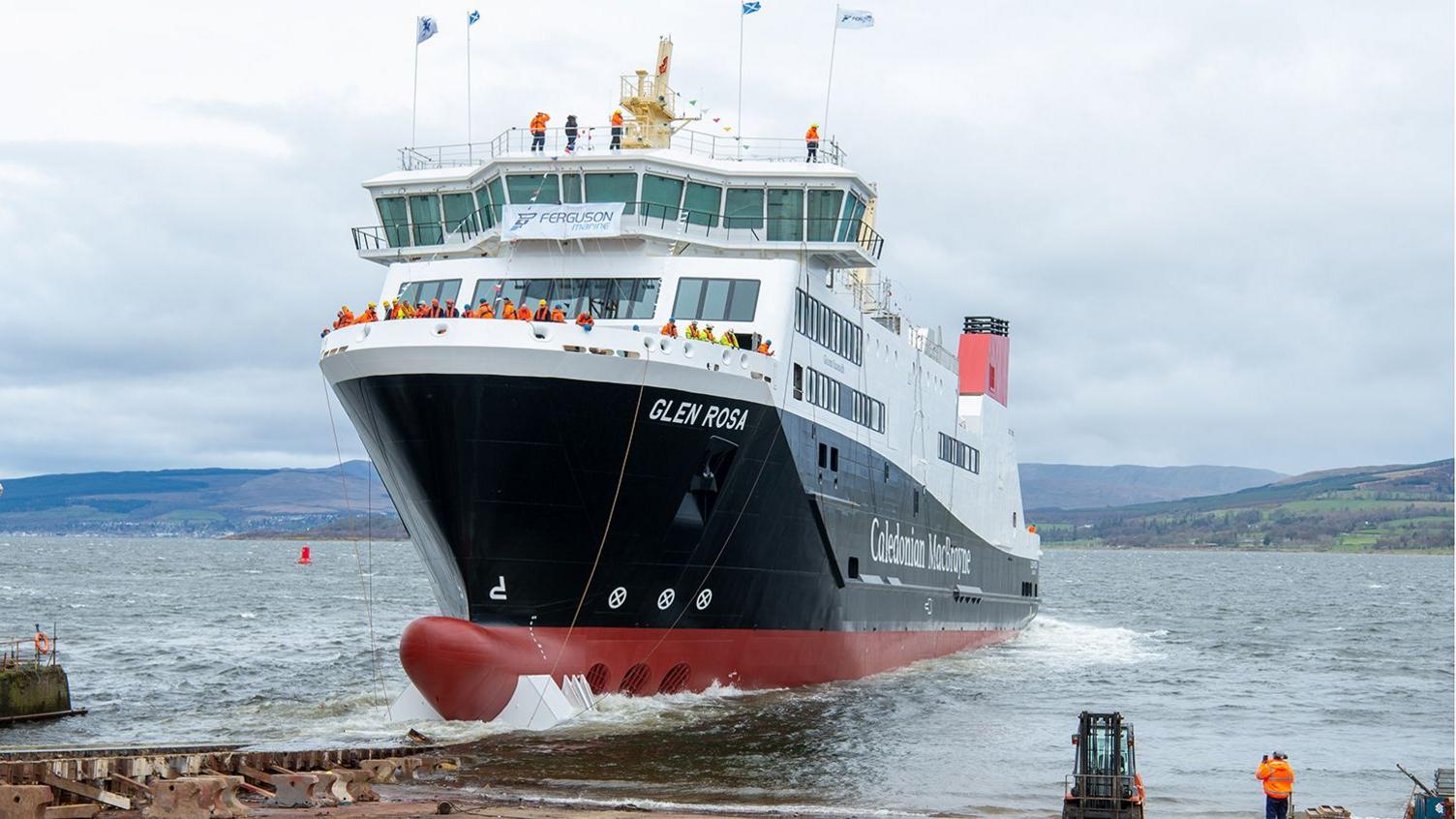Were Scotland's new gas-powered ferries a bad choice?

Some believe Glen Sannox would have been in service by now if a different propulsion system had been chosen
- Published
One of the CalMac ferries being built at Ferguson shipyard on the Clyde is facing more delays - and, not for the first time, they stem from the liquefied natural gas (LNG) propulsion system.
Glen Sannox and Glen Rosa are the first ever ferries built in the UK which will be capable of running on LNG.
But the delivery of MV Glen Sannox has now been put back by two months and is not due until 31 July.
A decade ago the decision to build the dual-fuel ships was seen as a step towards a greener ferry fleet.
But those green credentials have since been questioned - and some believe the ships would have been in service years ago if a more conventional design had been chosen.
So was the decision to order LNG ferries a mistake?
What was the thinking at the time?
Back in 2014, LNG was seen as a sensible "transition fuel" on the road to a greener future.
By the end of the following year there were about 30 LNG-fuelled ferries in service worldwide, mostly in Norway and the Baltic nations.
The technology was not new and a Finnish manufacturer, Wartsila, had developed a range of engines - including dual-fuel variants that could easily switch between LNG and conventional marine gas oil (MGO).
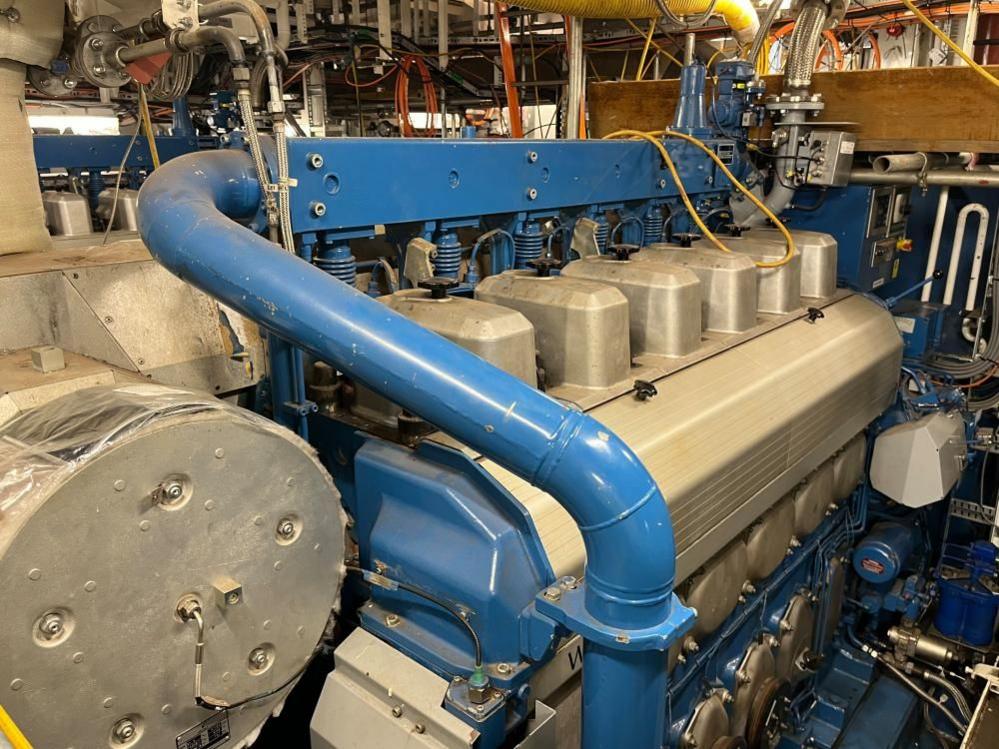
Glen Sannox is fitted with Wartsila dual-fuel engines
The main attraction was that, while still a fossil fuel, LNG burns cleaner than marine diesel or MGO, producing far less nitrous and sulphur oxides pollutants - known as NOx and SOx.
That was a big driver because it meant the ships would easily comply with new regulations due to come into force in 2020.
And there were cost advantages because at the time gas was cheap.
The engines are also said to produce up to 25% less carbon dioxide.
Launching Glen Sannox, the then first minister Nicola Sturgeon said the ship would further enhance "Scotland's reputation in the low carbon revolution".
But are they really 'green ships'?
In terms of NOx and SOx they have advantages - but for greenhouse gas emissions the benefits are questionable.
The oft-quoted figure about them using 25% less CO2 does not take into account the carbon cost of getting the LNG fuel to the ships.
The business case for the vessels relied on the assumption that by creating demand for LNG in Scotland, market forces would deliver a local supply solution.
That hasn't happened.
Instead the LNG will have to be imported from Qatar to a terminal in Kent, then driven 460 miles to Scotland by diesel road tankers.
Each ship will need to be topped up with LNG once or twice a week.
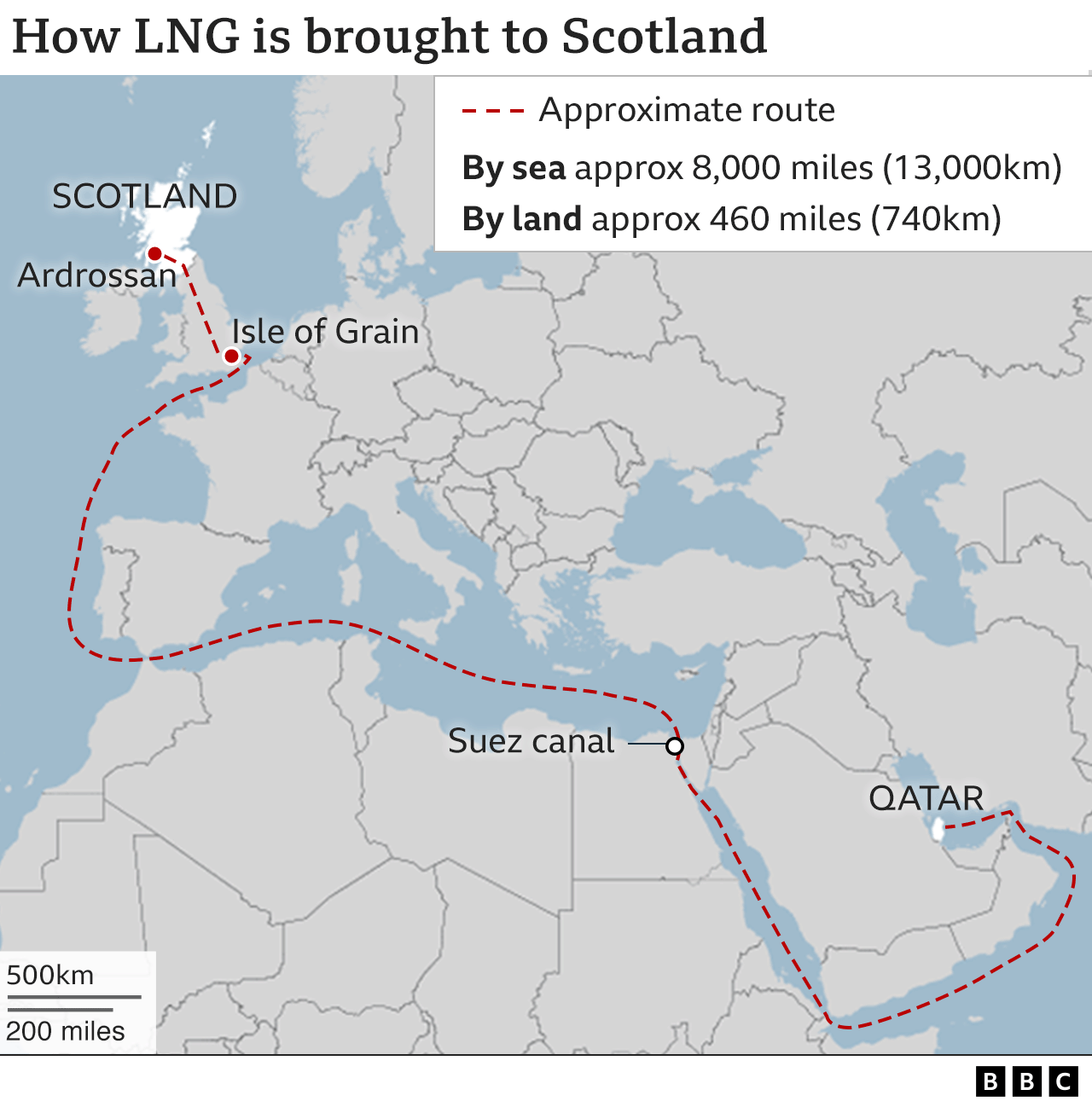
There is also something called "methane slip" - which is when the gas passes through the engines unburnt and escapes into the atmosphere.
Methane is itself a greenhouse gas, far more harmful than CO2.
In 2016 an independent report commissioned by CalMac noted that "from a greenhouse gas perspective, the benefit of using LNG does not seem significant".
It continued: "Add methane release during bunkering and the CO2 cost of transporting the LNG from afar, the CO2 emission benefit virtually disappears."
A greener solution might be to power the ferries on "bio-methane" - which is processed from industrial waste, manure and sewage - rather than extracted gas, but there are presently no such plans.
Are there other problems with LNG?
While LNG technology was well established, only one of the shipyards bidding for the CalMac order, a Polish yard, had extensive experience of working with it.
It is a potentially hazardous fuel which has to be stored at minus 162C using special cryogenic tanks and pipework.
After being awarded the contract, Ferguson's small design team found themselves on a very steep learning curve.
Fitting all the extra pipework and other equipment into a roll-on roll-off ferry the size of Glen Sannox or Glen Rosa, where so much space is taken up by car decks, was a considerable design challenge.
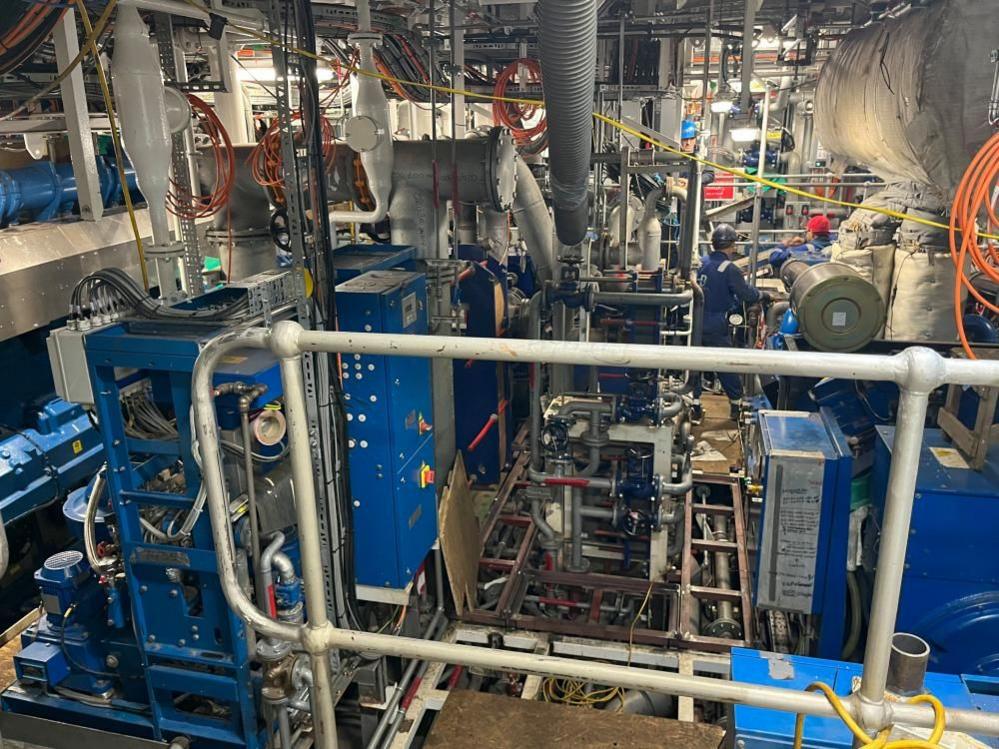
Glen Sannox contains 12,500 pipe sections and 186 miles (300km) of cabling
The LNG equipment also adds weight - a big problem because these ships were also expected to carry a very high amount of cargo, a 25% increase on similarly-sized ships in the CalMac fleet.
While LNG is still commonly used in shipping, it tends to be used on larger vessels, making long voyages rather than relatively short island crossings.
Refuelling is also an issue. A fact-finding trip to Denmark in October 2015 confirmed that tankers are a very slow way of getting LNG onto a ship, and that dedicated fast refuelling stations would have to be constructed.
Government-owned ferries and harbours agency CMAL awarded a £4.5m contract for such work in 2020, external - but nothing has been done because the redevelopment of Ardrossan harbour has stalled.
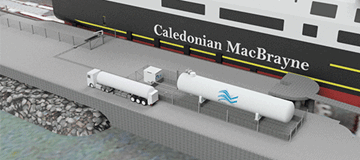
A contract has been signed for dedicated LNG refuelling facilities which are much quicker - but nothing has yet happened
LNG creates other headaches for CalMac as well. All the port staff and crew on board Glen Sannox and Glen Rosa will have to undergo "familiarisation" training for gas, while staff involved in refuelling will need more in-depth training.
The cost could run into millions.
The scheduling of refuelling could also be problematic given that the LNG tankers have to travel such long distances.
And it takes three times as long to refuel from an LNG tanker than it does from a tanker carrying traditional MGO.
Since the Ukraine war, the cost advantage of LNG has largely disappeared.
In Norway, one ferry operator has converted its LNG ferries to dual-fuel, external so it can run them on MGO instead, while other operators are going all-electric.
Whose idea was it to build LNG ships?
That is disputed.
According to CMAL, it was backed by ferry operator CalMac.
CMAL chief executive Kevin Hobbs - who was not in post at the time - has pointed out that CalMac's original Specification of Operational and Technical Requirements (SOTR) document spelt out clearly that the vessels were to be dual fuel.
But a source who was employed by CalMac at the time has told BBC Scotland News that the idea originally came from CMAL because there was pressure to make ships greener in order to secure Scottish government funding.
In evidence to MSPs in 2020, , externalCommodore Luke van Beek, an independent expert appointed by the Scottish government to review the ships' construction, described a conversation he had with former CalMac chief executive Martin Dorchester.
"He told me that the two ships 801 and 802 were not the ships that CalMac wanted. In particular, CalMac did not want LNG fuel," he said.
Why not ditch LNG and run the ships on MGO?
With two vessels currently out of service and little spare capacity in the fleet, CalMac is facing a difficult summer.
Given the fragile situation, would it make sense to postpone commissioning the LNG systems on Glen Sannox and get the ship into service sooner, running on just MGO initially?
Having already compromised on many of the ship's original ambitious specifications, CMAL - which is the owner of the vessel - appears reluctant to give ground on this.
At the recent launch of the second ferry, Glen Rosa, that question was put to CMAL boss Kevin Hobbs.
"The LNG will be commissioned," he said. " You really have to commission the full ship and not have a critical part of the ship uncommissioned."
Could Glen Sannox be brought into service without LNG?
CMAL has not ordered any more LNG ships since Glen Sannox and Glen Rosa.
The four new ferries currently under construction in Turkey have conventional engines with some limited battery power - and fuel-efficient hull shapes.
The vessels are arguably just as "green" as the LNG ships, but without the design and build complications that have dogged the project in Port Glasgow.
It looks likely that Glen Sannox and Glen Rosa will be both the first and last LNG ships built for the CalMac fleet.
Related topics
- Published19 April 2024
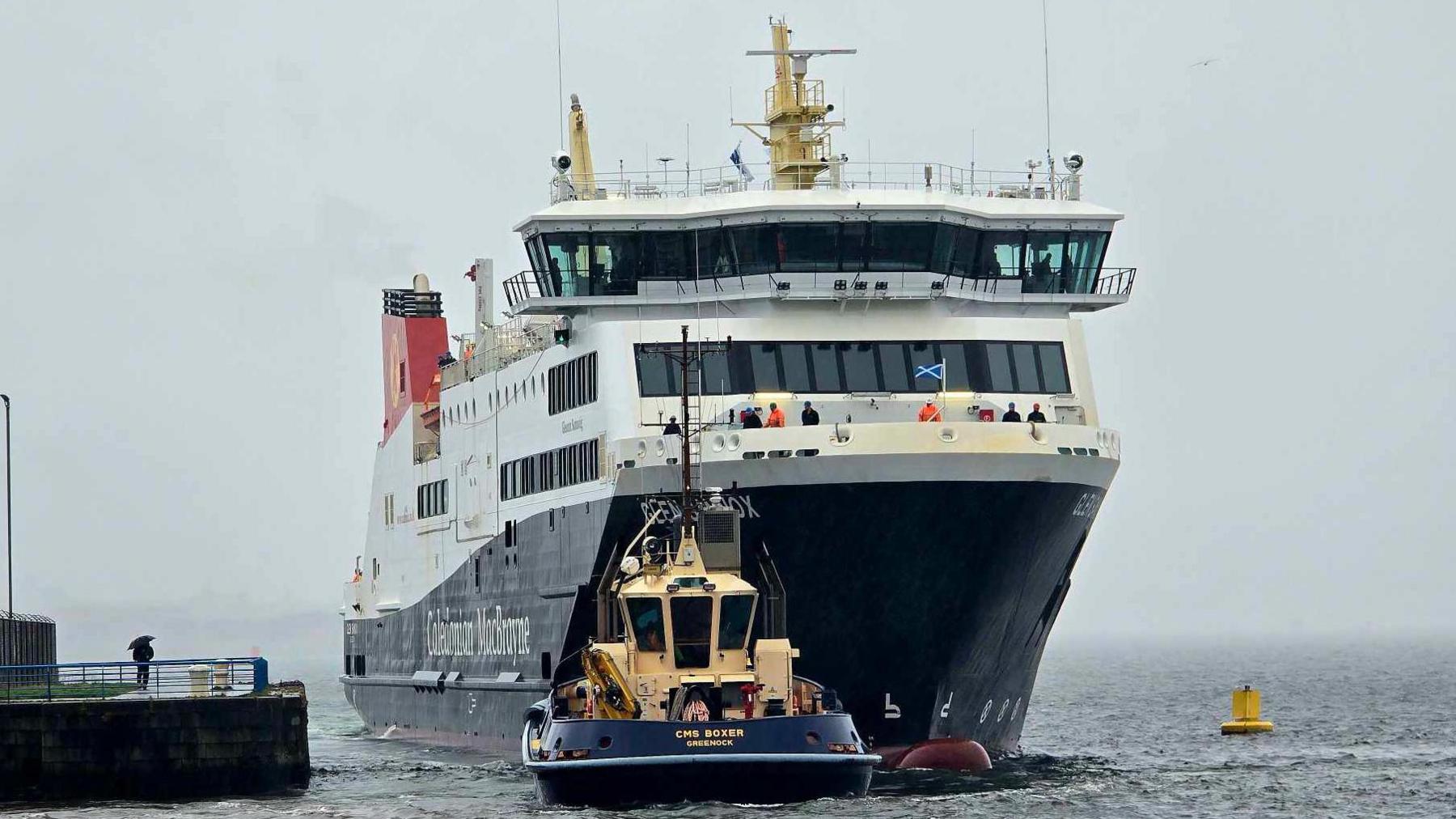
- Published26 November 2023
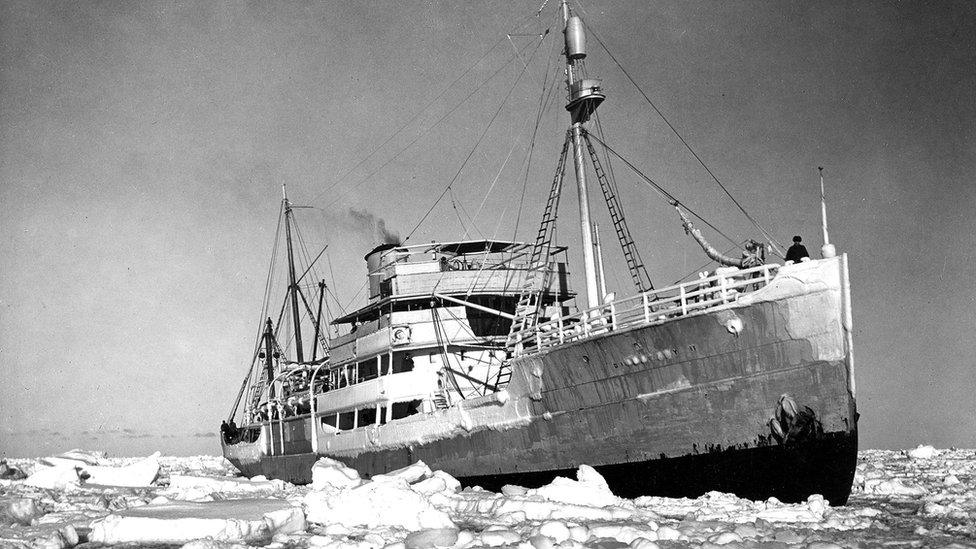
- Published9 April 2024
